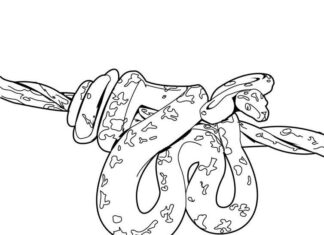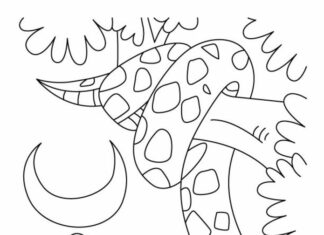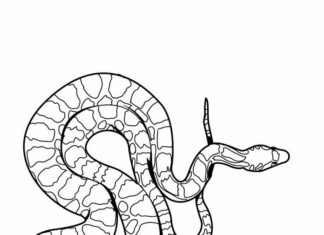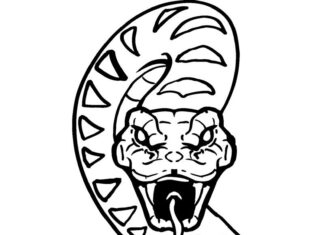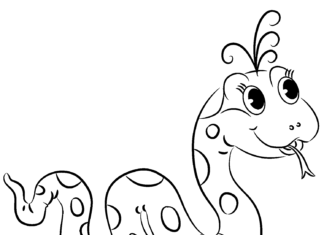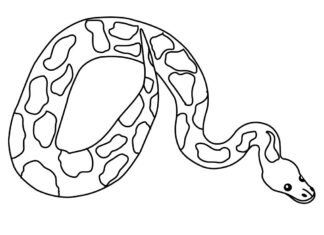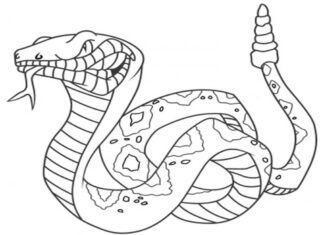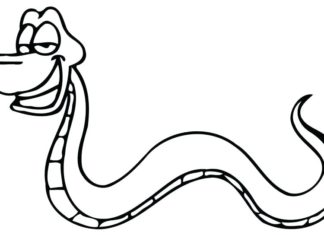Snakes are a group of reptiles in the order Scaly (Squamata) and suborder Serpentes. They are found all over the world, live in a wide variety of habitats and are distinguished by their distinctive legless body.
Snakes Coloring Pages
information
- Body structure: Snakes are characterized by a long, cylindrical body lacking legs. They also lack movable eyelids, external ears and pelvic bones. Their body is covered with scales, which can come in different shapes and colors, depending on the species.
- Food and diet: Most snakes are predators, feeding mainly on small animals such as rodents, birds, amphibians and other invertebrates. Occasionally, snakes can be found devouring large prey compared to their own body size.
- Hunting tools: Snakes are equipped with specially adapted hunting tools. They have movable jaws that allow them to swallow prey larger than their heads. Their teeth are adapted to grasp and hold prey.
- Breathing: Snakes breathe using their lungs, but do not have a diaphragm. The movement of the body node helps them to exchange air.
- Reproduction: Snakes can reproduce in a variety of ways. Most snakes are oviparous, laying eggs, but there are also viviparous snakes that give birth to live young.
- Venom and poison: Some snakes have venom that they can use to hunt or defend themselves. The venom is produced by venom glands located in the snakes' jaws. Some venomous snakes can be dangerous to humans.
- Culture and symbolism: Snakes have been present in the mythologies and cultures of various societies around the world. They are often a symbol of wisdom, transformation, secret knowledge, or are associated with negative aspects such as betrayal or danger.
- Species diversity: There are more than 3,000 species of snakes, making the group highly diverse in appearance, behavior and ecology. Snakes are found in a variety of environments, from deserts to rainforests.
- Adaptation to the environment: Snakes show various adaptations to their environments. Some species are great climbers, others have the ability to dig, and some have the ability to mimic, allowing them to hide in their surroundings.
- Protection and threats: Many snake species are endangered by habitat loss and overharvesting for trade. However, some snakes play an important role in regulating pest populations.
TIDBITS OF INFORMATION
1) All of them are carnivores - there is no representative that eats otherwise
2) Way of eating - due to the fact that they have no teeth but fangs with which they inject venom most often or use it to defend themselves, this is why they swallow their victims whole.
3) Winter sleep - snakes don't enter it, they just don't move, but they have all consciousness.
4) As for their length, on average the species is up to one meter long, but the large specimens are from 6 to even 15 meters.
5) Life expectancy - averages 10 to 30 years, up to 40 years under good conditions.
6) They can acclimatize to very high altitudes in the Himalayas they can be found as high as 5000 m above sea level.
7) The skin of this reptile is always covered with smaller or larger scales - these scales are always dry.
8) They live on virtually every continent in the world except one, the Antarctic.
9) During digestion its body temperature increases by about 1 degree, the ideal temperature for this species is about 30 degrees. They do not digest only claws and hair.
10) There are over 700 venomous snakes in the world, but not all of them can kill humans. These are much less because there are about 200 species.


